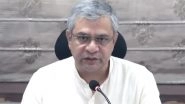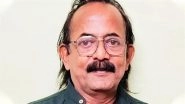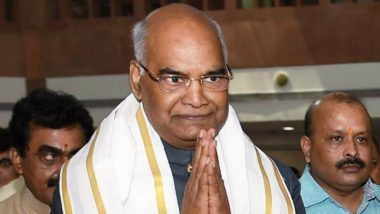Da Nang, November 19: President Ram Nath Kovind and his wife Savita Kovind visited the Museum of Cham sculpture in the city of Da Nang on Monday morning on the second day of his three-day visit to Vietnam. The first couple also visited the My Son temple sanctuary that dates from the 4th to the 13th CE. This is the first visit to Da Nang by an Indian President after India established diplomatic relations with Vietnam. With the civilisational connect that Da Nang has with India, it's a wonder that this region hadn't found more importance with Indians both in government and tourism sectors. The Vietnamese people trace their roots back to 192 AD when the indigenous Cham people lived an Indian cultural way of life. The Dua clan ruled Cham or Champa dynasty and several temple ruins and monuments depict the rich cultural heritage of that period.
(The giant Shiv Linga with the wedding of Lord Ram and Sita carved on its base) (Holy bull Nandin - the faithful attendant and emblem of Lord Shiva)
(Yaksa - Nature spirit portrayed in Indian arts) The city of Indrapura now called Dong Duong was the capital of the Champa Kingdom from 875 to about 1000 AD. The museum which the Indian first couple visited has many artefacts that have been recovered from that region. There are as many as 500 artefacts displayed, but the most treasured among all is the idol of Goddess Tara.
(Bodhisattva Tara) While usually a replica of goddess Tara is placed for the visitors, the original one was displayed today for the President's visit. No Hookah Bars in Punjab as President Ram Nath Kovind Okays Bill; Becomes 3rd State After Maharashtra and Gujarat to Impose Ban.
President Ram Nath Kovind and the Indian delegation also witnessed a cultural programme showcasing Cham music and dance. #Vietnam pic.twitter.com/THWzOOVoRK
— ANI (@ANI) November 19, 2018
(Temple foundation element) (Goddess of Wealth, Laksmi) (Agni, Varuna, Vayu, Kubera and Isana - The deities who rule the specific directions of space)
In Da Nang was also the ancienty city (ANCIENT CITY) of Singhapura (City of the Lion - not to be confused with the modern Singapore) in the valley of My Son where a number of spectacular temple ruins and towers are carefully protected and can be viewed. The President and his wife spent the better part of an hour visiting the monuments. (Garuda - The holy bird) (Garuda devouring Naga) The Archaelogical Survey of India began with the conservation and restoration of the Cham monuments at the UNESCO world heritage at My Son at the end of February 2017. The first part of the project involved excavating and preserving many artefacts. Scores of terracotta and stone works of art ranging from the 7th to 15 centuries are displayed at the museum. Some of these sculptures are considered as master pieces of their time. Idols and depictions of holy animals are clear pointers to the worship of Krishna Vishnu and Maheshwara. Shaivite Hinduism remained dominant in this region till the advent of Budhism in 4th century CE. Sanskrit inscriptions are visible in many places in the temple complex. Each temple cluster has one main temple called the 'kalan'.
(Lord Vishnu) (Dancing Lord Shiva) Champapura's or My Son's stone and red brick temples are remarkable in their elaborate iconography and delicate sculptures which has withstood the ravages of time and wars that raged in this region. Conservation and restoration of the My Son monuments began much before ASI came into the picture. In the early 20th century French archaelogists began work here but damages took place during World War II, the the two Indo-China wars and episodic climatic conditions like floods and humidity. After the unification of Vietnam in 1975, restoration work again took effect. The government of Vietnam has listed My Son as one of the 23 important special national heritages.
So what really happened to the Champa or Cham people? Today most of the Cham people adhere to Islam, having converted around the 10th century. The Kings of Indrapura fought many wars with Dai Viet dynasty which finally led to the killing of the Cham King Parameshvaravarman. The dynasty perished and the Dai Viet rulers annexed most of Cham territories by the 15th century. The red brick temples stayed on though. The Cham rulers were great sea farers of their time controlling the trade in spices and silk all the way from China to the Indonesian archipelago right up till India. Language culture and tradition linked all the countries in that route. At My Son, King Bhadravarman established a linga called the Bhadreshwara, establishing Shaivaite form of worship as a dominant cultural phenomenon that continued for several centuries. Some of the cities of the Cham dynasty are Amravati, Vijaya, Indrapura, Kauthara and Panduranga.all in modern day Vietnam. Now they have different names and an amalgamation of various cultures. The President and entourage also witnessed a cultural programme showcasing Cham music and dance.













 Quickly
Quickly


